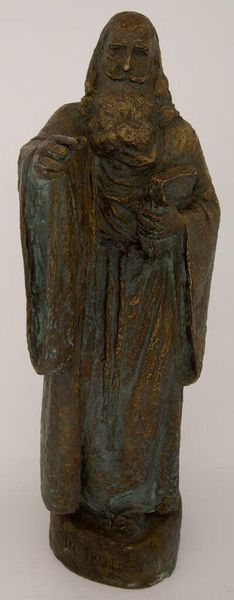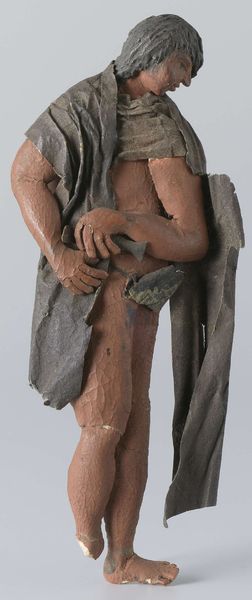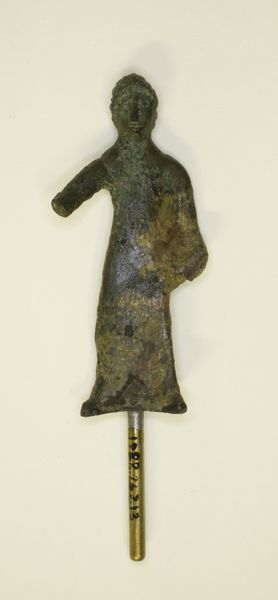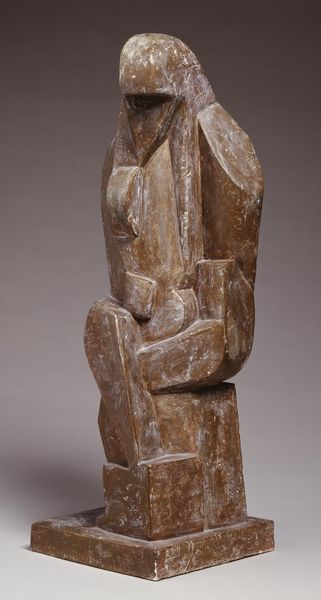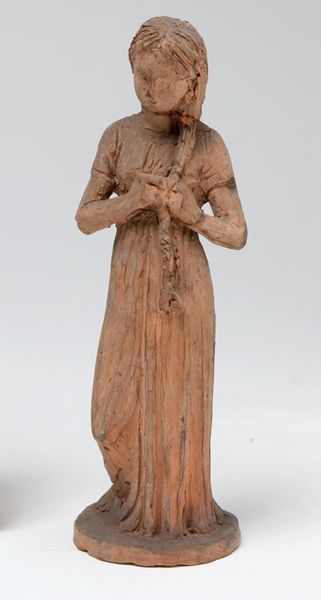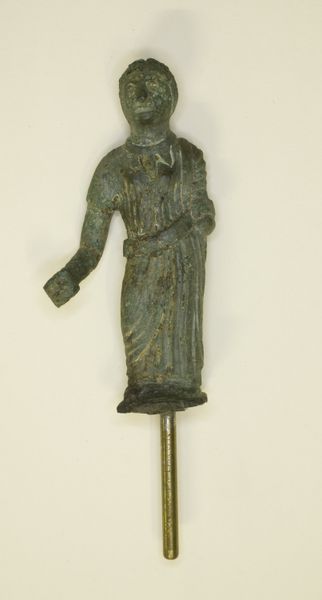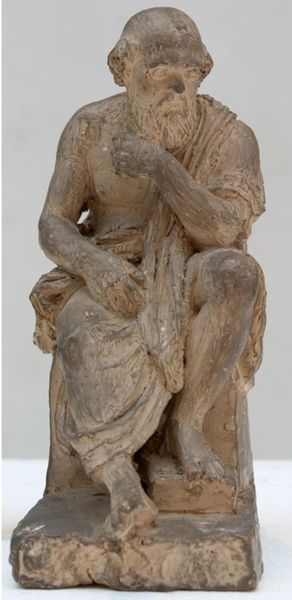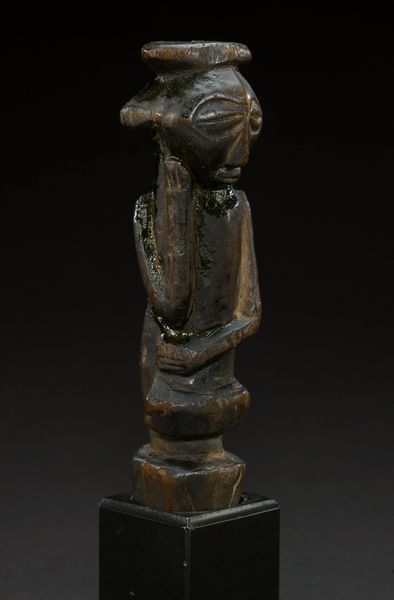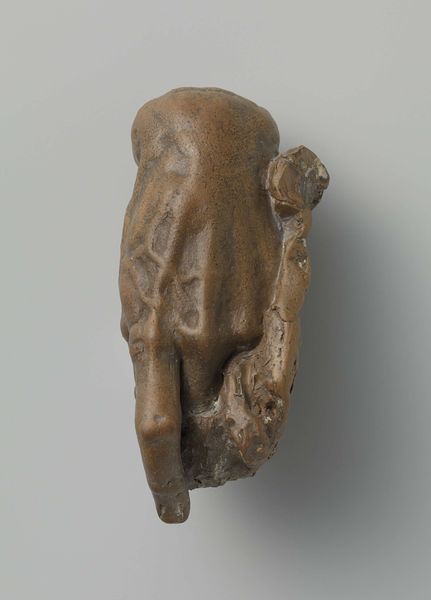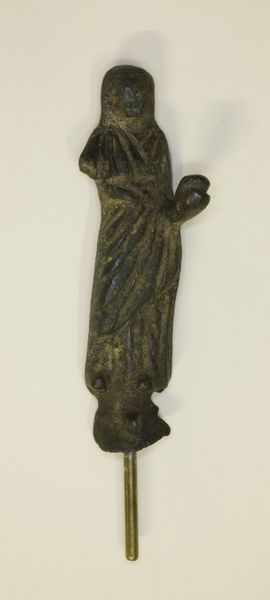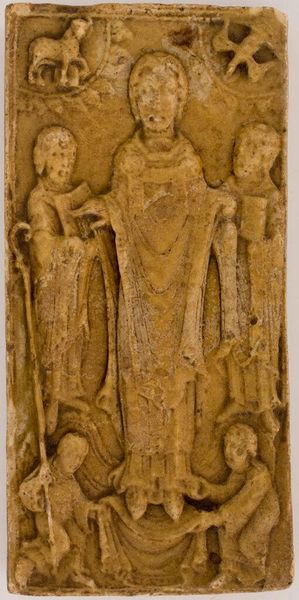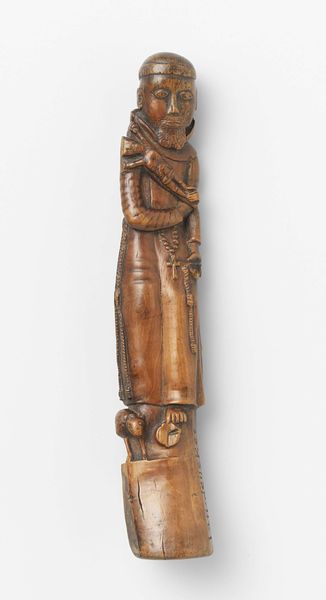
sculpture, wood
#
portrait
#
sculpture
#
sculpting
#
sculpture
#
wood
#
realism
#
statue
Dimensions: height 6 cm, width 2.3 cm
Copyright: Rijks Museum: Open Domain
Curator: Welcome. Before us stands “Een man,” a wooden sculpture crafted by Gerrit Schouten, sometime before 1839. The piece presents a figure in what appears to be contemplative repose. Editor: There's an undeniable weariness in this figure, wouldn't you say? The texture of the wood seems to amplify the solemnity. Curator: Indeed. The material, wood, carries its own connotations. The rough-hewn quality combined with a relative lack of ornamental detail situates the sculpture as prioritizing form above superficiality. There's a directness to it, eschewing elaborate representational techniques for a simpler articulation of human presence. Editor: Precisely. And that’s precisely why I see the work as being very socially telling. Consider the colonial context—Schouten, working perhaps in Suriname, representing a man. The simplicity of attire, the downward gaze. I find myself asking questions about class, labor, and resistance, particularly the positionality of men under colonial governance. The downcast eyes might read as submission, but couldn’t they equally be interpreted as quiet resilience, or suppressed anger? Curator: I understand your point. One could extend that reading to suggest that the simplification of form speaks to a desire to democratize art, moving it away from the realm of the elite patron to become a tool for engaging with wider audiences and representing ordinary people. But isn’t that imputing contemporary ideals onto a work whose original intent is possibly far simpler: namely, observation? Editor: Perhaps. But is pure observation ever really divorced from power? Who is doing the observing, and from what position? I agree the lines in this work may speak of simplicity, even humility. However, a deeper reading asks if that simplicity reveals Schouten reflecting a desire for basic human respect? Curator: Perhaps it's best we leave the viewer with such open questions, highlighting not just the form, but the complex world of its formation. Editor: Agreed. The sculpture as silent, enduring testimony to multifaceted humanity.
Comments
No comments
Be the first to comment and join the conversation on the ultimate creative platform.
